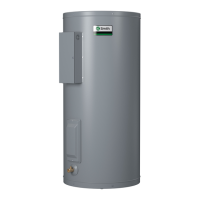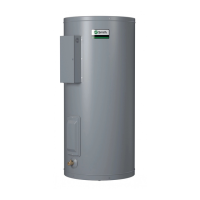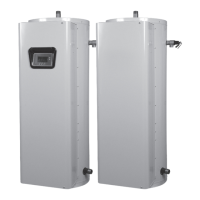Commercial Electric Water Heater Use and Care Guide • 7
GETTING STARTED
Figure 1 - Flexible connectors use compression
fittings and do not require soldering.
Figure 2 - Use a non-contact circuit tester to
insure that the power is off before you work on
a circuit.
Figure 3 - Install a Pressure Reducing Valve set
to 50 to 60 PSI.
1
Review all of the instrucons
before you begin work.
Improper installaon can
damage the water heater and
property, and can present risks of
serious injury or death.
2
Check with your local/
provincial authories for any
local/provincial codes that
apply to your area. In the absence of
local/provincial codes, follow the
“Canadian Electrical Code” CSA C22.1
current edion and the Naonal
Plumbing Code (NPC). The instrucons
in this manual comply with naonal
codes, but the installer is responsible
for complying with local/provincial
codes.
3
Before you start, be sure you
have, and know how to use,
the following tools and
supplies:
• Plumbing tools and supplies
appropriate for the type of water
pipes in the plumbing system
• Threaded connectors (gure 1) for
the cold and hot water pipes
• For plasc pipe, use threaded
connectors suitable for the specic
type of plasc pipe used: CPVC and
PEX (cross-linked polyethylene). Do
not use PVC pipe.
• For copper pipe, you may purchase
connector kits with compression
ngs that don’t require soldering
(gure 1). Compression ngs
are easier to install than soldering
copper pipes.
• Thread sealant tape or pipe joint
compound approved for potable
water
• Tools to make the electrical
connecons (for example,
screwdrivers, wire strippers)
• Non-Contact circuit tester to check
for power (gure 2)
• Water Pressure Gauge (see page 11,
gure 4)
• Suitable drain pan (see page 12,
gure 6)
• Automac leak detecon and shut-
o device
• Pressure Reducing Valve (gure 3)
• Thermal Expansion Tank (see page
11, gure 5)
• Thermostac Mixing Valves (see
page 12, gure 7)

